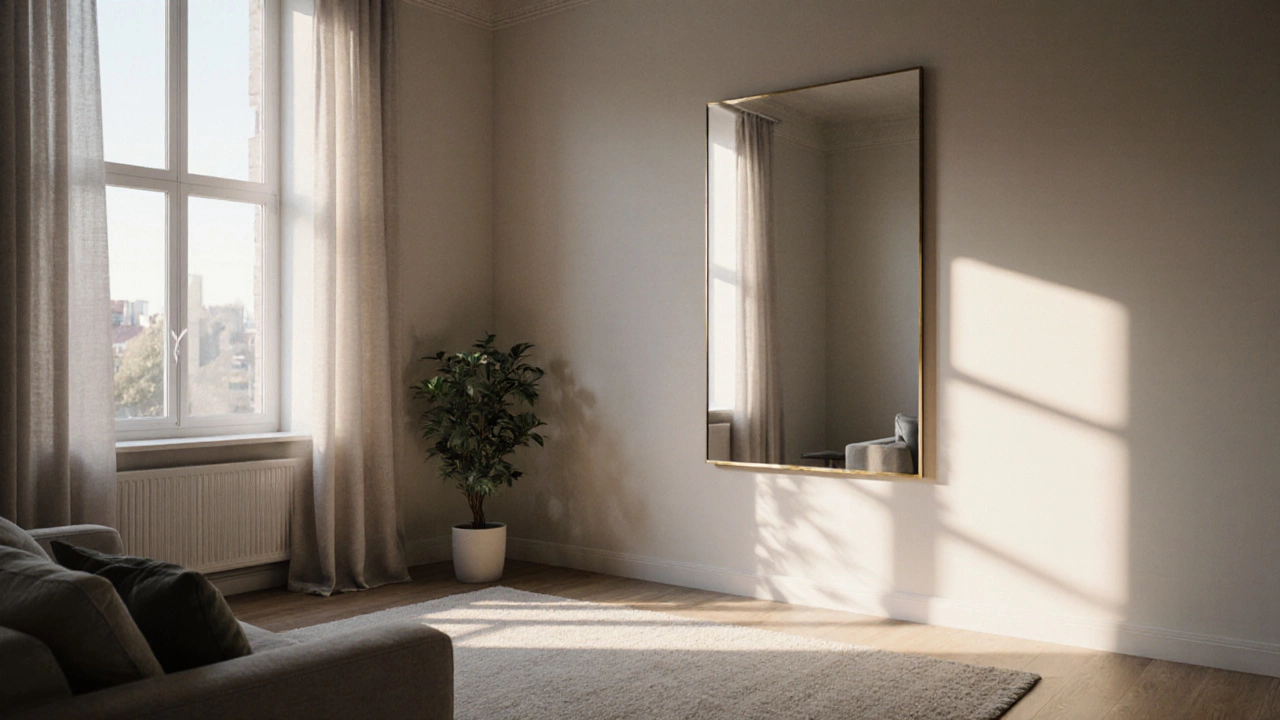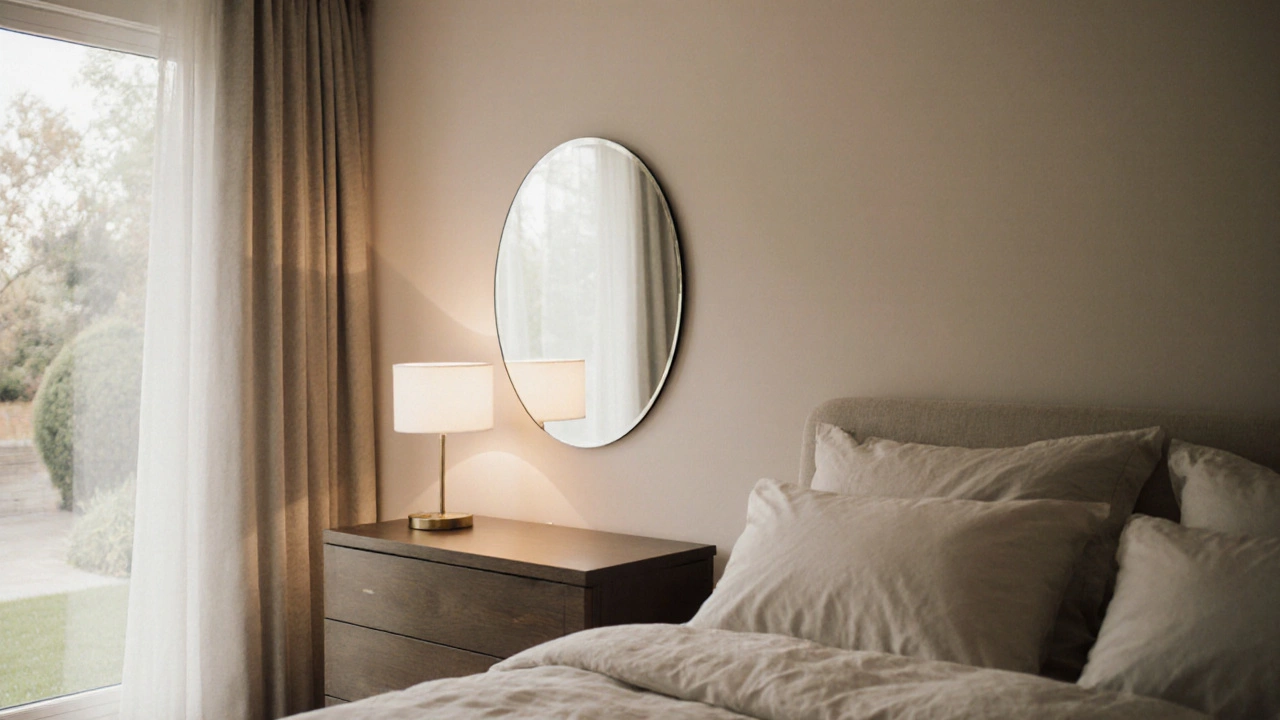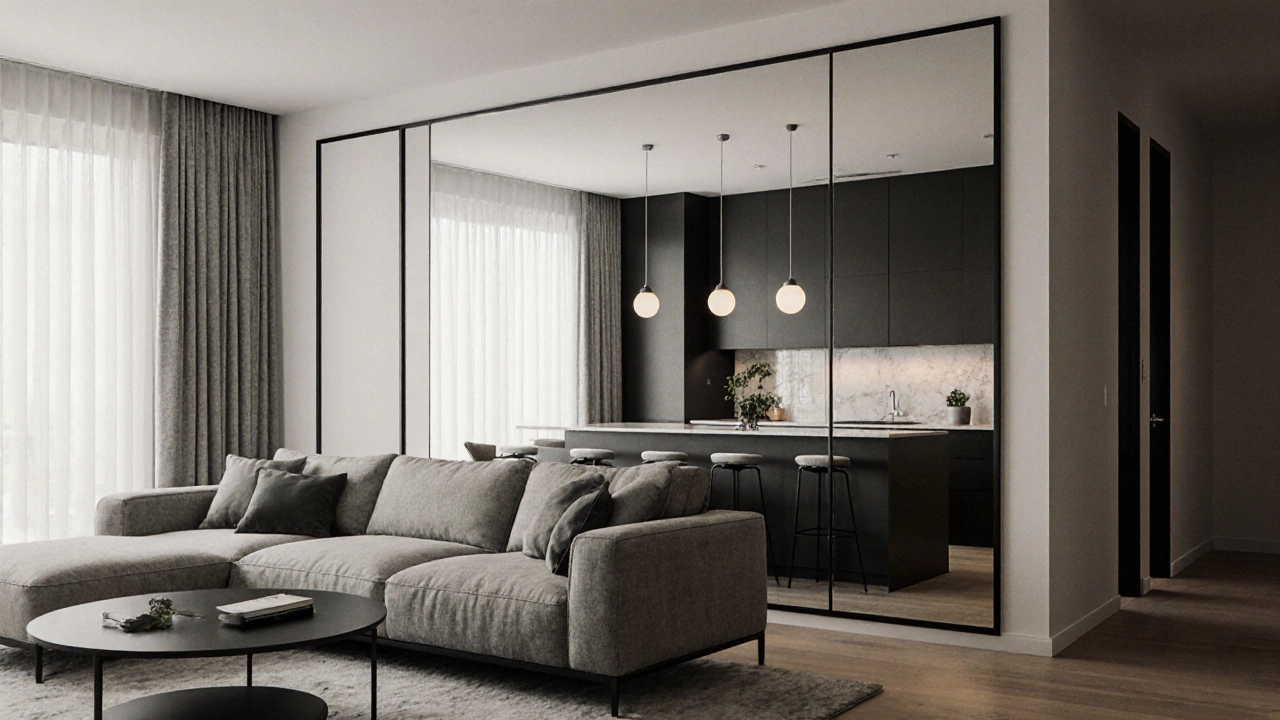Three Essential Mirror Rules for Perfect Home Placement

Mirror Placement Calculator
Calculate Mirror Placement
Recommendations
Ever stared at a mirror and felt something was off, even though it technically works? That uneasy feeling usually comes from breaking one of the three core mirror rules that designers swear by. Follow these guidelines and your mirrors will instantly boost light, space, and style without looking out of place.
What a Mirror Actually Is
Mirror is a reflective surface, typically glass coated with a thin metal layer, that reproduces an image of whatever is in front of it. Beyond its practical use for checking outfits, a mirror acts like a visual window - it can double a room’s depth, redirect sunlight, and even shape the energy flow in a space.
Why the Rules Exist
Mirrors aren’t just decorative fluff; they’re tools that manipulate perception. When placed correctly, they amplify natural light, make cramped rooms feel airy, and guide the eye toward focal points. Misplaced mirrors, however, can create awkward glare, shrink a room’s feel, or even clash with cultural concepts like Feng Shui. That’s why designers boil everything down to three simple rules.
Rule #1 - Align the Mirror With Light Sources
First rule: position a mirror so it catches and reflects a primary light source - be it a window, skylight, or a well‑placed lamp. The reflected light bounces around the room, brightening dark corners and adding a sense of openness.
- Window reflection: Center the mirror on a wall directly opposite a window. The natural daylight will double, making the space feel larger.
- Lamp bounce: In rooms without big windows, place a mirror near a floor or table lamp. The lamp’s glow will spread, reducing harsh shadows.
- Avoid glare: If a mirror faces a bright light directly, it can create a blinding glare. Tilt the mirror slightly or use sheer curtains to soften the effect.
Think of the mirror as a secondary window. In a narrow hallway, a mirror opposite the front door can instantly make the passage feel twice its length.

Rule #2 - Respect the Room’s Function and Energy Flow
Second rule: consider how the room is used and what activities happen there. Mirrors can amplify both positive and negative vibes, so placement matters especially in bedrooms, bathrooms, and dining areas.
- Bedroom caution: Avoid placing a mirror directly opposite the bed. Traditional feng shui suggests this disrupts sleep by reflecting energy back onto the sleeper.
- Bathroom boost: A mirror above the vanity is a classic choice - it reflects both artificial and natural light, making the space feel cleaner and larger.
- Dining area: A mirror on a wall behind the dining table can double the visual space and add an elegant backdrop, but keep the reflection subtle to avoid overstimulating conversation.
In open‑plan living areas, a large floor‑to‑ceiling mirror can serve as a visual divider, separating the lounge from the kitchen without sacrificing the airy feel.
Rule #3 - Match Mirror Size to Wall Space and Proportion
Third rule: the mirror’s dimensions should relate to the wall and surrounding furniture. A too‑small mirror on a large wall looks lost; an oversized mirror can dominate and overwhelm.
- Rule of thirds: Aim for a mirror that occupies roughly one‑third of the wall width. This proportion feels balanced and intentional.
- Height harmony: The center of the mirror should sit at eye level (about 57‑60 inches from the floor) for most users. In rooms where people are seated (like a dining room), lower the mirror slightly.
- Group styling: If you love a gallery wall, combine several smaller mirrors of varying shapes. The collective visual weight should equal a single large mirror in the same space.
When in doubt, use the “hand‑measure” trick: hold a sheet of paper the same size as the intended mirror against the wall. If it feels right, you’re probably on the right track.
Bonus Tip - Frame Style and Maintenance
While not a formal rule, the mirror’s frame (or lack thereof) influences the overall vibe. Sleek metal frames add a modern edge; ornate wood complements classic interiors. Whatever you choose, keep the glass clean - dust and water spots reduce reflectivity, negating the rule‑based benefits.

Common Pitfalls and How to Fix Them
| Mistake | Why It Hurts | Easy Fix |
|---|---|---|
| Placing a mirror opposite a TV | Reflected screen glare distracts viewers | Angle the mirror or switch to a non‑reflective frame |
| Using a tiny mirror in a large hallway | Fails to add depth, looks out of place | Upgrade to a larger slab or multiple narrow mirrors |
| Mounting a mirror at waist height in a bedroom | Creates unsettling reflections while lying down | Move it higher or tilt it downward |
| Leaving the glass dirty | Reduces the light‑doubling effect | Wipe weekly with a vinegar‑water solution |
Quick Checklist Before You Hang
- Does the mirror reflect a natural or artificial light source?
- Is the placement appropriate for the room’s purpose (e.g., no bedroom‑bed opposite placement)?
- Is the size roughly one‑third of the wall width and centered at eye level?
- Have you chosen a frame that matches the room’s style?
- Is the glass clean and free of streaks?
Frequently Asked Questions
Can I use a mirror to make a small bedroom look larger?
Yes. Hang a mirror opposite a window or on the wall opposite the bed. The reflected light and view will visually expand the space.
Are there any mirrors I should avoid in a dining room?
Avoid highly decorative, heavily framed mirrors that clash with the table setting. A simple, slightly tinted mirror works best, as it adds depth without overwhelming conversation.
How high should I hang a mirror over a sofa?
Place the bottom edge about 6-8 inches above the sofa back, and ensure the center is roughly eye level for seated guests (about 54-58 inches).
Do mirrors affect energy flow according to feng shui?
Yes. Mirrors can double positive chi when they reflect beautiful views or light, but they can also bounce negative energy if placed opposite a cluttered area. Follow the placement rule and keep the reflected scene tidy.
Is it okay to lean a mirror against a wall without mounting?
Leaning works for temporary setups, but make sure the mirror is stable and the reflected image isn’t distorted by an uneven angle. For permanent décor, secure it with brackets.